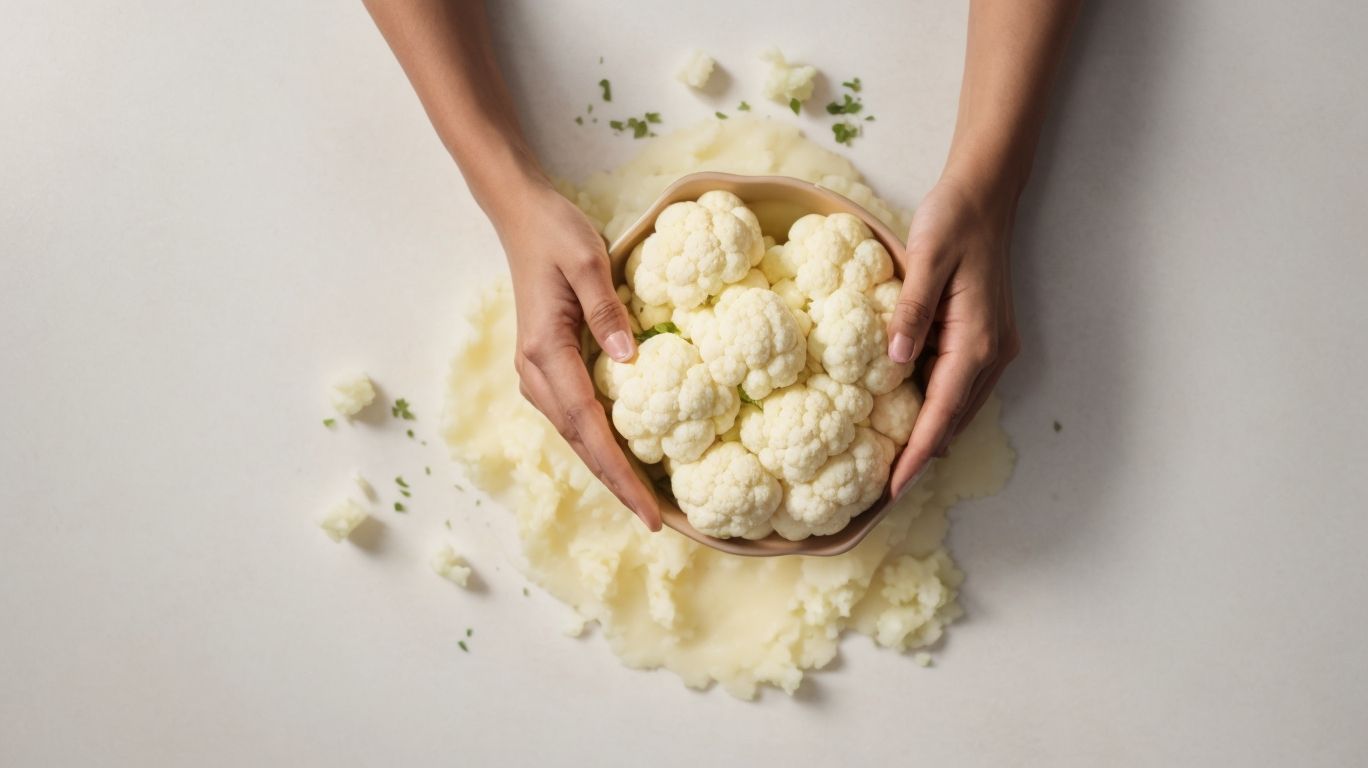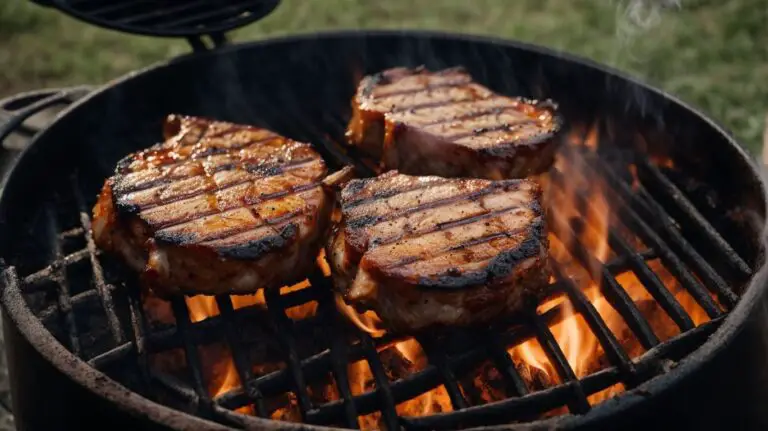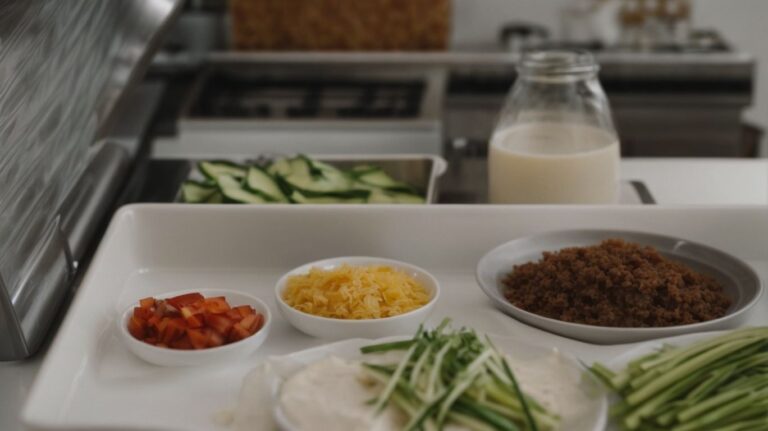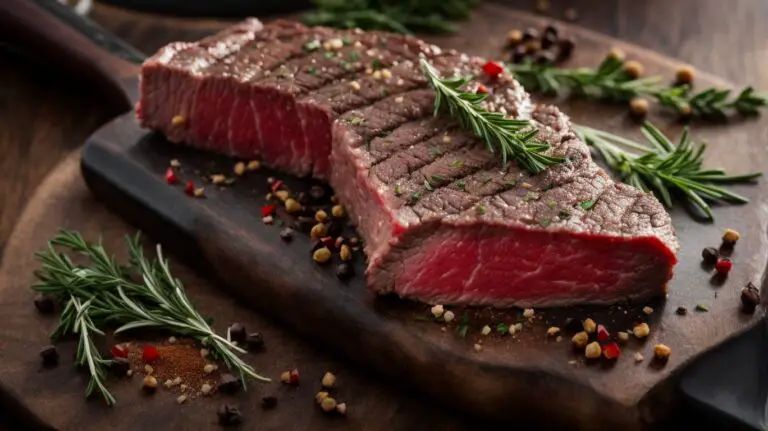How to Cook Cauliflower Into Mashed Potatoes?
Looking for a healthier alternative to traditional mashed potatoes? Cauliflower might just be the answer!
In this article, we explore what cauliflower is and how it differs from potatoes. We also discuss the health benefits of cauliflower, making it a popular choice for those following a low carb or keto-friendly diet.
Discover how to prepare and make delicious cauliflower mashed potatoes, with tips for achieving the perfect creamy texture and flavor enhancements. Let’s get cooking!
Key Takeaways:
What is Cauliflower?

Credits: Poormet.Com – Jeffrey Rivera
Cauliflower, a versatile vegetable from the Brassica oleracea species, is known for its compact white head of undeveloped flowers surrounded by green leaves.
Belonging to the same family as broccoli, kale, and cabbage, cauliflower is packed with essential nutrients such as vitamin C, vitamin K, and fiber. This cruciferous vegetable is a popular choice in various cuisines worldwide, prized for its mild, slightly nutty flavor and ability to absorb a variety of seasonings and spices. Commonly seen in dishes like stir-fries, curries, and salads, cauliflower can also be roasted, mashed, or turned into a flavorful cauliflower rice, offering a low-carb alternative to traditional grains.
How is Cauliflower Different from Potatoes?
Cauliflower differs from potatoes in terms of texture, flavor, and nutrient content, offering a lighter and more nutritious alternative to traditional starchy tubers.
Unlike the creaminess of potatoes, cauliflower has a milder, slightly sweet taste that complements a variety of dishes. Its texture, when cooked, can range from tender to slightly crunchy, adding a pleasant contrast to meals. From a nutritional standpoint, cauliflower is a low-carb vegetable rich in vitamins, minerals, and antioxidants, making it a popular choice for those following specific dietary plans. With its versatility, cauliflower can be transformed into rice, pizza crust, or mashed ‘potatoes,’ offering a healthier twist on classic comfort foods.
Why Use Cauliflower Instead of Potatoes?
Opting for cauliflower over potatoes presents a low-carb alternative that retains a creamy texture and delicious flavor profile in various recipes.
Due to its mild taste, cauliflower acts as a versatile canvas for various flavors, making it an ideal ingredient to experiment with in the kitchen. Whether roasted, mashed, or pureed, cauliflower can mimic the consistency of potatoes while offering a lighter and less starchy option. Cauliflower is rich in nutrients like vitamin C, K, and fiber, which makes it a healthier choice for those looking to reduce their carbohydrate intake without compromising taste or texture.
Health Benefits of Cauliflower
Cauliflower boasts an array of health benefits, being a nutritious vegetable that is naturally gluten-free and rich in essential vitamins and minerals.
One cup of cauliflower provides nearly the entire daily recommended intake of vitamin C, a powerful antioxidant that supports immune health and collagen production, aiding in skin health.
Cauliflower is a good source of fiber, promoting digestive health and contributing to feelings of fullness and satiety, which can assist in weight management.
This versatile veggie contains compounds that have anti-inflammatory properties, potentially reducing the risk of chronic diseases like heart disease and cancer.
By incorporating cauliflower into your diet, you can avail yourself of these numerous health benefits and elevate your overall well-being.
Low Carb and Keto-Friendly Option
Cauliflower serves as a remarkable low-carb and keto-friendly option in various cuisines, offering a versatile ingredient for dietary-conscious individuals.
Due to its mild taste and ability to absorb flavors, cauliflower can be transformed into a variety of dishes, from cauliflower rice to cauliflower pizza crust, providing low-carb alternatives to traditional high-carb meals. This cruciferous vegetable is also a rich source of essential nutrients like vitamin C, vitamin K, and fiber, making it a valuable addition to healthy eating plans. Whether roasted, mashed, or blended into soups, cauliflower truly adapts to different cooking techniques while still maintaining its nutritional benefits.
How to Prepare Cauliflower for Mashed Potatoes?

Credits: Poormet.Com – Ethan Baker
Preparing cauliflower for mashed potatoes involves selecting the right cauliflower, cleaning it thoroughly, and employing suitable cooking methods such as steaming or boiling.
When selecting cauliflower, look for firm heads with tightly packed florets and vibrant green leaves. Avoid any discoloration, spots, or wilting as these may indicate spoilage. Once you have chosen the perfect cauliflower, begin by rinsing it under cool water to remove any dirt or debris. Trim off the leaves and stem, cutting it into florets of similar sizes for even cooking.
- For steaming, place the cauliflower florets in a steamer basket over boiling water. Cover and steam for about 10-15 minutes until tender but not mushy.
- If you prefer boiling, bring a pot of salted water to a boil and add the cauliflower florets. Boil for 5-7 minutes until soft.
After cooking, drain the cauliflower well and let it cool slightly before mashing it with a potato masher or processing it in a food processor until smooth and creamy. Season with salt, pepper, butter, or your favorite herbs to enhance the flavor of your mashed cauliflower, a nutritious and delicious alternative to traditional mashed potatoes.
Choosing the Right Cauliflower
Selecting the right cauliflower for your mashed cauliflower recipe is crucial; opt for fresh, firm heads with no discoloration or soft spots.
When shopping for cauliflower, focus on the consistency of the florets, ensuring they’re tightly packed without any signs of yellowing. Look for a head that feels heavy for its size, indicating moisture content and freshness. Remember, cooking methods play a significant role in the final texture of the mashed cauliflower.
For a creamy result, steaming or boiling the florets until fork-tender is ideal. Avoid overcooking, as this can lead to a watery consistency. By following these guidelines, you’ll elevate the flavor and texture of your dish.
Cleaning and Preparing the Cauliflower
Cleaning and preparing cauliflower involves removing the leaves and stem, breaking it into florets, and washing them thoroughly before proceeding with the desired cooking method.
Once you have selected a fresh cauliflower head, begin by trimming away the green leaves surrounding the base, and then cut off the tough stem at the bottom to create a flat surface for stability. Breaking the cauliflower into florets involves cutting the head into smaller, bite-sized pieces. Remember to do this with care to maintain the florets’ shape and structure.
After separating the florets, it’s crucial to wash them under running water to remove any dirt or debris that may be trapped between the curds. Thoroughly cleaning the florets is essential for not only hygiene but also to ensure the cauliflower’s pure flavor in your dish.
Cooking Methods for Cauliflower
Various cooking methods can be employed for cauliflower, including steaming, boiling, or using a food processor, each influencing the final texture and flavor of the dish.
Steaming cauliflower involves gently cooking it with the steam produced by boiling water, preserving its natural crunch and minimizing nutrient loss. On the other hand, boiling cauliflower can soften it more significantly, making it ideal for mashing or incorporating into soups.
Using a food processor to blend cauliflower can transform it into a creamy puree, which serves as a nutritious alternative to mashed potatoes, allowing for diverse culinary creations.
How to Make Cauliflower Mashed Potatoes?
Crafting delicious cauliflower mashed potatoes involves blending cooked cauliflower with desired ingredients to create a creamy, flavorful dish adaptable to various preferences, including vegan alternatives.
When selecting cauliflower for this dish, look for a head that feels heavy for its size and has tightly packed florets, indicating freshness. Boiling the cauliflower until tender ensures a smooth texture when blended.
Adding garlic and a splash of plant-based milk while blending can enhance the overall flavor profile of the mashed cauliflower, giving it a savory kick.
For those following a vegan diet, using vegetable broth instead of dairy products can achieve a rich and velvety consistency without compromising on taste.
Basic Recipe
The basic recipe for cauliflower mashed potatoes involves blending steamed cauliflower with butter, garlic, and other seasoning to create a delectable side dish.
For this creamy and flavorful dish, start by steaming fresh cauliflower florets until they are tender. Once cooked, transfer the cauliflower into a food processor or blender. Add a generous amount of butter for richness and mashed potato-like texture. To infuse a delightful aroma, include minced garlic into the mix.
Season with salt and pepper to taste, enhancing the flavors further. Blend the ingredients until smooth and creamy, adjusting consistency by adding a splash of milk or cream if needed. For extra flair, consider incorporating grated Parmesan cheese or chives for an added depth of flavor.
Adding Flavors and Variations
Elevate your cauliflower mashed potatoes by incorporating Parmesan cheese, sour cream, and other flavorful ingredients to customize the dish to your taste preferences.
Adding a touch of sour cream to your cauliflower mash brings a creamy richness that balances beautifully with the earthy flavor of the cauliflower. For a burst of freshness, consider mixing in some finely chopped fresh herbs like chives or parsley. If you’re feeling adventurous, a sprinkle of smoked paprika can add a subtle smokey undertone to the dish. Experimenting with different cheeses such as Gruyère or sharp cheddar can also take your cauliflower mashed potatoes to a whole new level of flavor complexity.
Tips for Perfect Cauliflower Mashed Potatoes
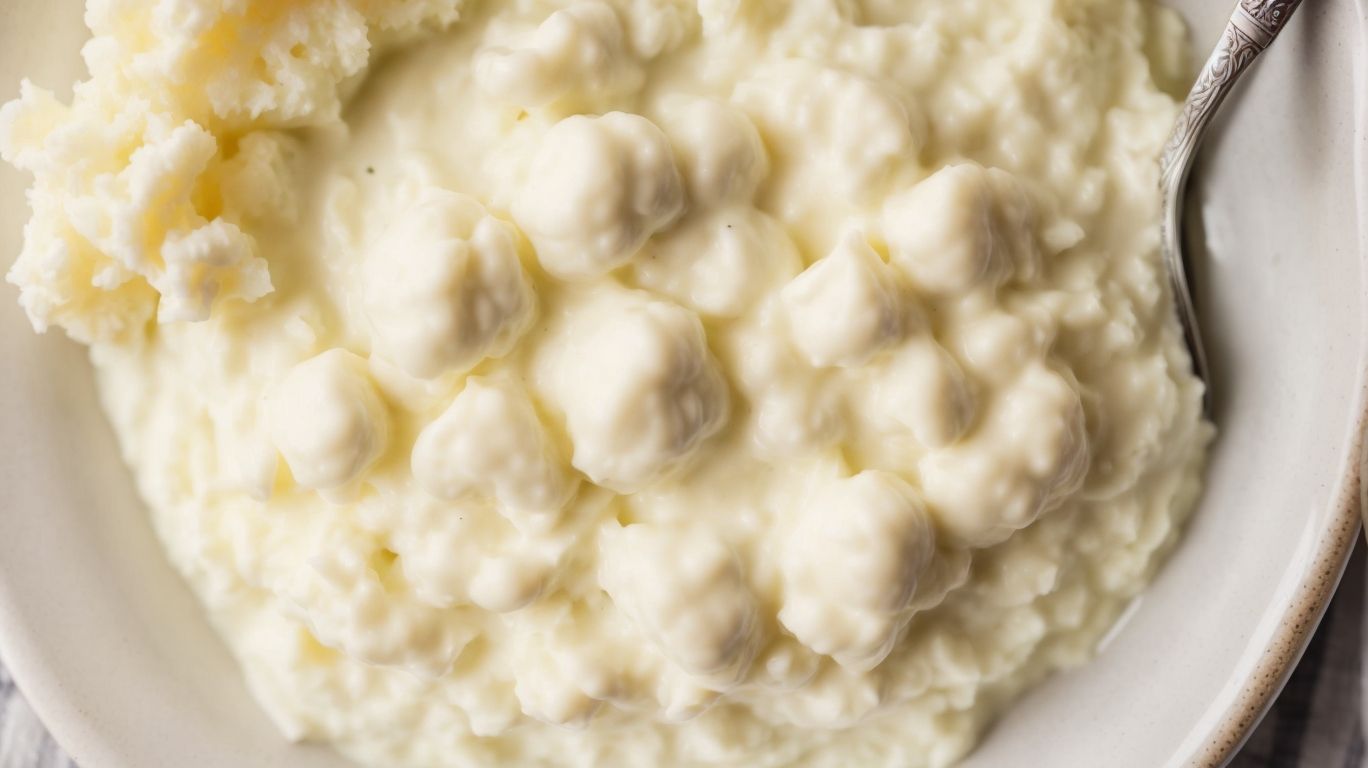
Credits: Poormet.Com – Vincent Martinez
Achieving perfect cauliflower mashed potatoes entails focusing on texture, flavor, and proper storage methods to retain freshness and taste for later consumption.
When aiming for a creamy texture in your cauliflower mash, using a food processor or blender can help achieve a smoother consistency compared to mashing by hand. Incorporating cream cheese or heavy cream can enhance the richness and flavor profile of the dish. To maintain the luxurious texture, consider adding a touch of garlic powder or parmesan cheese for extra depth of flavor.
Creamy Texture
To achieve a creamy texture in cauliflower mashed potatoes, consider using an immersion blender for a smooth and consistent consistency.
Immersion blenders, also known as stick blenders, are ideal for creating creamy textures in various dishes due to their ability to blend ingredients thoroughly and evenly.
When making cauliflower mashed potatoes, proper blending techniques are crucial. Start by steaming the cauliflower until tender, then transfer it to a bowl and season to taste. Gradually blend the cauliflower with a splash of milk or cream using the immersion blender, moving it in an up-and-down motion to achieve a velvety smoothness.
Flavor Enhancements
Enhance the flavor profile of your cauliflower mashed potatoes by incorporating roasted garlic, fresh herbs, and other aromatic ingredients for a savory and aromatic experience.
Roasted garlic adds a rich depth of flavor, while the fresh herbs bring a burst of brightness to the dish. Herbs like thyme, rosemary, or chives can elevate the taste with their unique fragrances. Incorporating a pinch of nutmeg or a sprinkle of smoked paprika can introduce a hint of warmth and complexity to the cauliflower mash. These nuanced flavors blend harmoniously to create a delightful culinary symphony on the palate.
Storage and Reheating
Proper storage and reheating techniques can prolong the freshness of your cauliflower mashed potatoes, allowing for convenient make-ahead preparations and freezer-friendly options.
When considering storing cauliflower mashed potatoes, it is essential to first ensure they are completely cooled before transferring them to airtight containers or freezer-safe bags. This helps maintain their texture and prevents moisture buildup. Labeling with the date is a good practice to keep track of freshness. If planning to reheat refrigerated cauliflower mashed potatoes, add a splash of milk or broth while gently reheating on the stovetop to retain creaminess. For frozen portions, thaw overnight in the refrigerator before reheating to preserve the flavor and consistency.
Conclusion
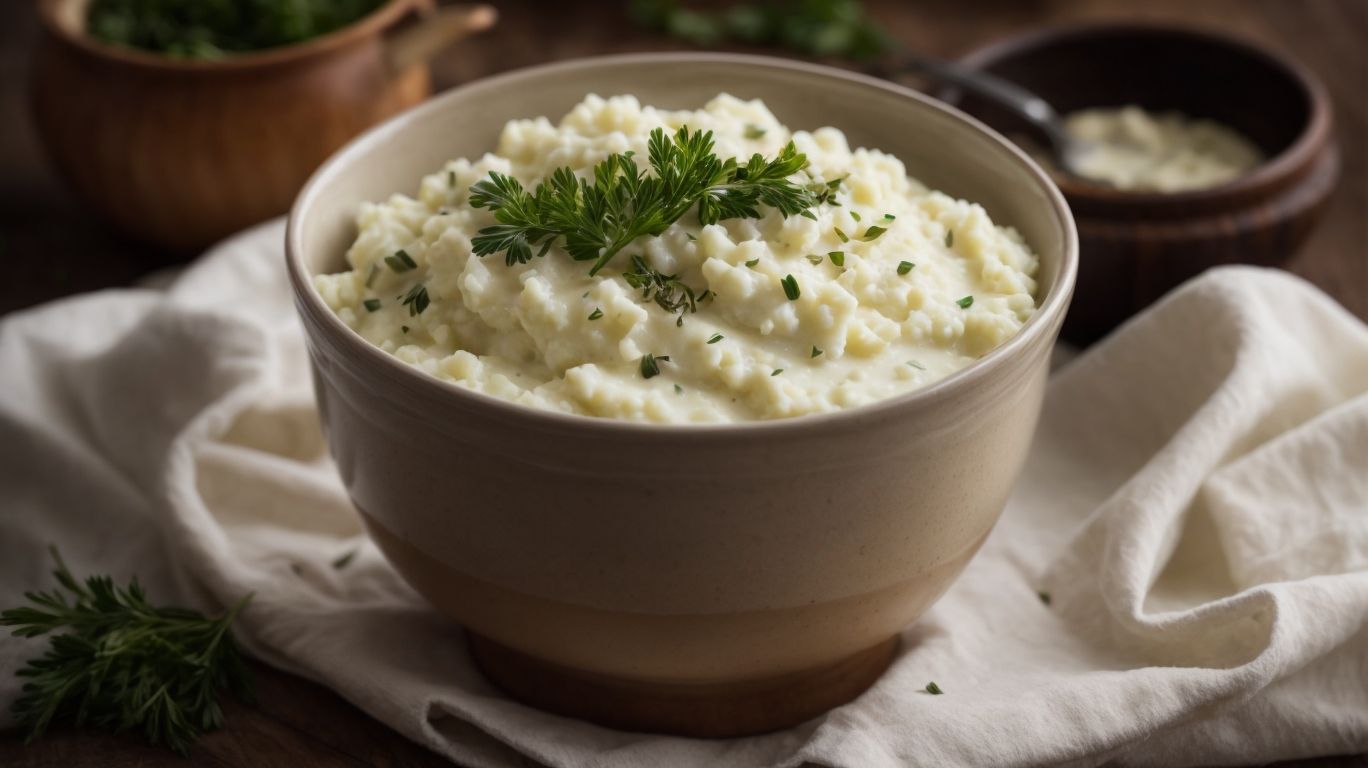
Credits: Poormet.Com – Thomas Rodriguez
Cauliflower mashed potatoes offer a delightful side dish option that caters to various dietary preferences and culinary needs, making it a versatile and flavorful choice, even for picky eaters.
They can be adapted to suit different cuisines by incorporating various herbs, spices, or cheese to enhance the flavor profile.
For those seeking a healthier alternative to traditional mashed potatoes, cauliflower mashed potatoes provide a low-carb and nutrient-rich option that is still creamy and satisfying.
This dish is particularly appealing for individuals following a keto, paleo, or gluten-free diet, offering a delicious substitute that doesn’t compromise on taste.
Frequently Asked Questions
1. What are the benefits of using cauliflower instead of potatoes for mashed potatoes?
Cauliflower is a great alternative to potatoes for mashed potatoes because it is lower in carbohydrates, calories, and starch. It also adds more nutrients and fiber to your dish.
2. How do I prepare the cauliflower before cooking?
Start by washing and cutting the cauliflower into small florets. If you have a food processor, you can also pulse it until it reaches a rice-like consistency.
3. Can I use frozen cauliflower for this recipe?
Yes, frozen cauliflower can be used for mashed potatoes. Just make sure to thaw it completely and drain any excess water before cooking.
4. What is the best way to cook the cauliflower for mashed potatoes?
The best way to cook cauliflower for mashed potatoes is to steam or boil it until it is fork-tender. This will take about 8-10 minutes.
5. How do I make sure my cauliflower mashed potatoes are creamy and smooth?
To achieve a creamy and smooth texture, use a food processor or blender to puree the cooked cauliflower. You can also add a little milk or cream to help achieve the desired consistency.
6. Are there any variations I can make to the traditional mashed potato recipe with cauliflower?
Yes, you can add different herbs and spices like garlic, thyme, or rosemary to enhance the flavor. You can also mix in grated cheese for a cheesy cauliflower mashed potato dish. Get creative and experiment with your favorite ingredients!

